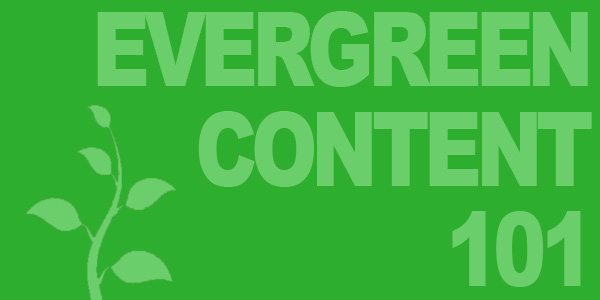Why is an SEO proposal so important for landing new clients?
Well, for starters:
- It’s the last bid you have to offer your clients.
- It closes the deal.
- And it makes or breaks your business.
To make potential clients go onboard with your company, you need an SEO proposal that organizes the details of your project in a way that seals the deal. Clients will use it to review and make a final decision about whether or not they need your company’s services. So, to create a proposal that wins clients, here are tips and an outline to walk you through the process:
OUTLINE FOR YOUR SEO PROPOSAL
All proposals will vary from project to project. But generally, an SEO Proposal will have these key qualities:
Summary
Start your proposal with a roadmap of words that leads your clients through a summarized version of your proposal. In it, you should outline your key points, main ideas, and anything else your clients need to know about what you have to offer. And don’t just talk about SEO strategy. Grab their attention with an opening statement that focuses on their needs.
Address the Problems
Talking about your company doesn’t interest your potential clients — they want to hear about themselves. Their problems. Their needs. You want them to understand why they need a better content solution. That’s what gets them listening and invested in what you have to offer.
Identify and Prioritize Keywords and SEO solutions
Clients are interested in a quantitative approach that will land them results, conversions, and returns from the implementation of SEO strategy. Without being too wordy and technical, explain the process and how it works to drive conversions. Make it clear that you have the solution to the problems you listed.
On-site, Off-site, and Social Media Content Review
Your proposal must go beyond SEO keyword solutions. Give them a quality content review of their webpages, both on-site and off-site. The on-site review should include an analysis of effectiveness of content on landing pages, blogs/articles, product pages, and other web pages. A review of the off-site content should discuss how the client’s website is being backlinked, used, and incorporated by other websites.
Direction, Strategy, and Timeline
Following the problems you’ve identified, you’ll then be in a position to explain the details of your proposed solutions. It should include:
- Implementing content strategy
- Blog development
- Running a/b tests
- Link building
- Overview of business goals and objectives
Timelines help keep both parties on track for meeting the necessary deadlines and set clearer expectations for your clients.
Forecast Performance and Reports
Once your client agrees on the strategy and timeline you’ve offered, you can provide an idea of how they can forecast the performance based on weekly and/or monthly reports. Discuss the analytics, tools, SEO KPIs, metrics, as well as the process behind the plans and reports.
Bio and Credentials
Introduce your business to your clients by including a section about your history and background. In it, fight the urge to praise and oversell your firm. Briefly outlining the core of your business and presenting your company as a personable and trustworthy business is key. Show testimonials and include your case studies to give your client something to relate to. Explain why you’re the perfect fit for your client, and let your credentials speak for themselves.
Price
Often, the price is the first thing that a company will look for and consider in your proposal. To be as clear and concise as possible, make a list of all the items you will be charging for. This helps your clients to get a better picture of the work that goes into the project and why the price you charge is completely worth it.
Terms and Conditions
Stating all of your terms and conditions will give your client specific deadlines, payment terms, deliveries, and responsibilities required for the project. It helps to enforce your agreement when your terms are breached. Putting detailed T&Cs will put you and your client on the same page, and it will help avoid mismatched expectations.
ANSWER THESE QUESTIONS BEFORE THEY EVEN ASK
As you write the proposal, you’ll have to include the information they need to answer these questions:
- What results do you plan on delivering? Give them the details and scope of how you will do it.
- What does your work entail? Reinforce the importance of the SEO process, what that process requires from their company, and remind them of what your work entails and why they need you.
- What’s your price? State it clearly so they know you’re not being sleezy about your services or hiding fees.
- What are your terms and conditions? You let them know what they should expect from you, and you lay out your own terms and conditions for the project.
TIPS AND TRICKS TO WIN YOUR CLIENT
- Create a Stunning Design. Win them with the first impression. Create a presentation that looks sophisticated yet creative. Create a clear, concise, and aesthetically pleasing presentation to land your clients.
- Evoke You and Your Company’s Personality. Your client wants to work with real people who really care about their needs. Show them the human side of you and your company to that they can relate to you on a personal level.
- Use Vivid Graphs and Images. If your client can have a visual of your ideas and proposals, they will gain a stronger impression of your offer.
- List Pricing Points. If you choose to offer multiple pricing options, that will give your main price a point of reference and allow your client to understand the value of your work.
- Keep it Simple. Fight the urge to create a long proposal. Fluff, jargon, and fillers aren’t going to win over new clients. Write your proposal in a straightforward manner with only the necessary information.
As clients review your SEO proposal, they will decide on whether or not to agree to the claims and offers you made during your initial meetings with them. As long as you follow these steps and tips, you’ll have a winning SEO proposal to land to clients you need.
Photo by Adam Grabek via Flickr










